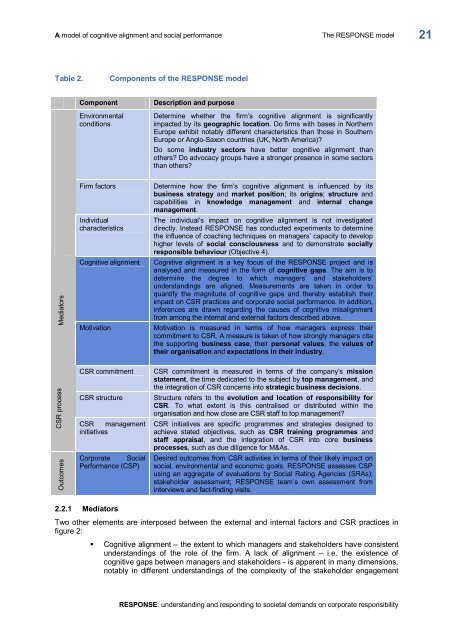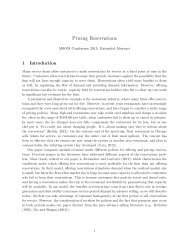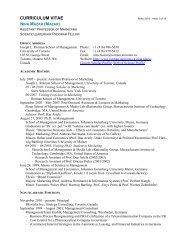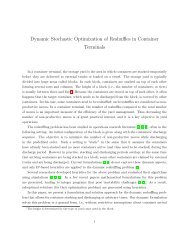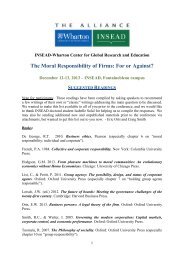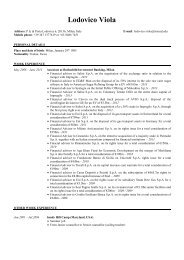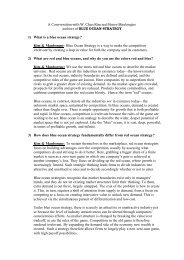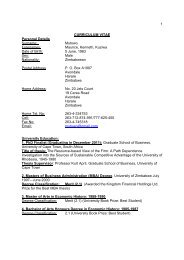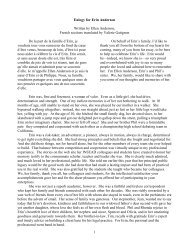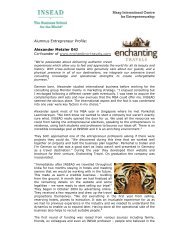RESPONSE - Insead
RESPONSE - Insead
RESPONSE - Insead
Create successful ePaper yourself
Turn your PDF publications into a flip-book with our unique Google optimized e-Paper software.
A model of cognitive alignment and social performance The <strong>RESPONSE</strong> model<br />
Table 2. Components of the <strong>RESPONSE</strong> model<br />
Mediators<br />
CSR process<br />
Outcomes<br />
Component Description and purpose<br />
Environmental<br />
conditions<br />
Determine whether the firm’s cognitive alignment is significantly<br />
impacted by its geographic location. Do firms with bases in Northern<br />
Europe exhibit notably different characteristics than those in Southern<br />
Europe or AngloSaxon countries (UK, North America)?<br />
Do some industry sectors have better cognitive alignment than<br />
others? Do advocacy groups have a stronger presence in some sectors<br />
than others?<br />
Firm factors Determine how the firm’s cognitive alignment is influenced by its<br />
business strategy and market position; its origins; structure and<br />
capabilities in knowledge management and internal change<br />
management.<br />
Individual<br />
characteristics<br />
The individual’s impact on cognitive alignment is not investigated<br />
directly. Instead <strong>RESPONSE</strong> has conducted experiments to determine<br />
the influence of coaching techniques on managers’ capacity to develop<br />
higher levels of social consciousness and to demonstrate socially<br />
responsible behaviour (Objective 4).<br />
Cognitive alignment Cognitive alignment is a key focus of the <strong>RESPONSE</strong> project and is<br />
analysed and measured in the form of cognitive gaps. The aim is to<br />
determine the degree to which managers’ and stakeholders’<br />
understandings are aligned. Measurements are taken in order to<br />
quantify the magnitude of cognitive gaps and thereby establish their<br />
impact on CSR practices and corporate social performance. In addition,<br />
inferences are drawn regarding the causes of cognitive misalignment<br />
from among the internal and external factors described above.<br />
Motivation Motivation is measured in terms of how managers express their<br />
commitment to CSR. A measure is taken of how strongly managers cite<br />
the supporting business case, their personal values, the values of<br />
their organisation and expectations in their industry.<br />
CSR commitment CSR commitment is measured in terms of the company’s mission<br />
statement, the time dedicated to the subject by top management, and<br />
the integration of CSR concerns into strategic business decisions.<br />
CSR structure Structure refers to the evolution and location of responsibility for<br />
CSR. To what extent is this centralised or distributed within the<br />
organisation and how close are CSR staff to top management?<br />
CSR management<br />
initiatives<br />
Corporate Social<br />
Performance (CSP)<br />
2.2.1 Mediators<br />
CSR initiatives are specific programmes and strategies designed to<br />
achieve stated objectives, such as CSR training programmes and<br />
staff appraisal, and the integration of CSR into core business<br />
processes, such as due diligence for M&As.<br />
Desired outcomes from CSR activities in terms of their likely impact on<br />
social, environmental and economic goals. <strong>RESPONSE</strong> assesses CSP<br />
using an aggregate of evaluations by Social Rating Agencies (SRAs);<br />
stakeholder assessment; <strong>RESPONSE</strong> team’s own assessment from<br />
interviews and factfinding visits.<br />
Two other elements are interposed between the external and internal factors and CSR practices in<br />
figure 2:<br />
Cognitive alignment – the extent to which managers and stakeholders have consistent<br />
understandings of the role of the firm. A lack of alignment – i.e. the existence of<br />
cognitive gaps between managers and stakeholders is apparent in many dimensions,<br />
notably in different understandings of the complexity of the stakeholder engagement<br />
<strong>RESPONSE</strong>: understanding and responding to societal demands on corporate responsibility<br />
21


